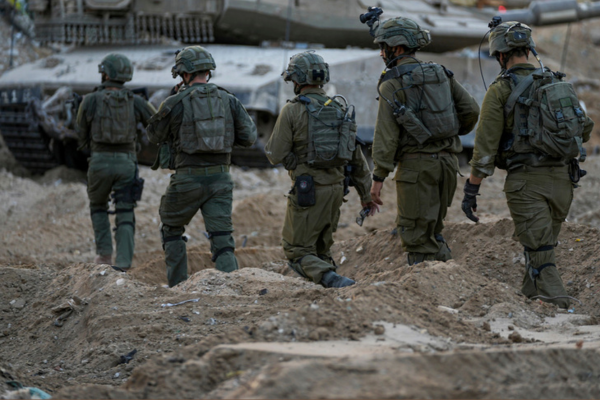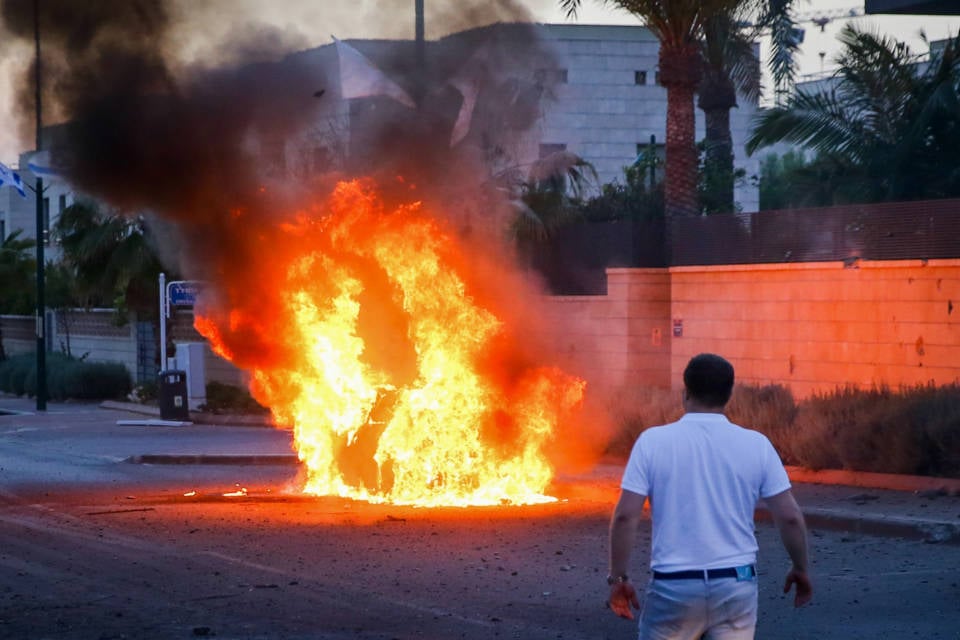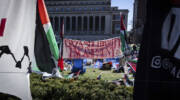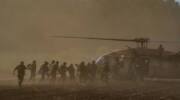IDF officials have recently confirmed that more than 5,000 terrorists in Gaza have been killed since Oct. 7.
By Yaakov Lappin, JNS
The Israel Defense Forces are engaging Hamas terror targets above and underground in the Khan Yunis sector of southern Gaza, where four Hamas battalions lurk, IDF Spokesperson Rear Adm. Daniel Hagari stated on Tuesday evening.
Also on Tuesday, terrorists in Gaza fired rockets at central Israel and Beersheva.
The Hamas battalions in this area played a highly active role in the Oct. 7 mass murder attack on southern Israel, Hagari said, before returning to Khan Yunis.
“At the same time, we are fighting in northern Gaza in the heart of Shejaiya and Jabalia, destroying underground targets and killing terrorists,” he said. Targets that can be struck are hit, and the remainder of Hamas’s terror squads are confronted when they engage on the ground and attack the IDF, he added.
Hagari said 138 hostages are still being held in Gaza, adding that one person was added to this list after the military concluded that a missing person was, in fact, kidnapped.
“We are under a moral obligation to return them all home,” he stated.
The IDF announced on Tuesday that seven of its soldiers were killed in combat, although they fell in recent days and not all on Tuesday over four battle zones in Gaza, Hagari said. Intense battles are occurring where “Hamas terrorists are feeling the pressure and coming out of the ground,” he said. “There is no battle where we do not have the upper hand.”
“Overall, since the beginning of the war, we have attacked over 20,000 targets across the Gaza Strip,” said Hagari.
He described the fallen as “heroes of Israel that enable us to fulfill the goals of the war and secure Israel for years into the future.”
“We are prepared for a long war,” acknowledged Hagari, adding that the IDF’s movement into Khan Yunis is evidence of the IDF’s ability to conduct major ground maneuvers alongside humanitarian aid; to inject forces stealthily; and to strike a terror organization that uses human shields and hides underground. Time is needed to defeat such an enemy, he stressed.
Hagari cited Hamas senior terrorist Moua Abu Marzuk, who boasted of 500 kilometers of tunnels with “civilians that defend them,” adding that the IDF is taking apart Hamas’s tunnel project. This involves gathering information, destroying the shafts, and focusing on strategic tunnels that host Hamas leaders or advanced weapons.
“We are using a range of means to get the terrorists out of the tunnels,” he said, adding that any solution in line with international law could be used in response to a question about a report on potential plans to flood tunnels with seawater.
The IDF has entered its third phase of ground operations against Hamas in Gaza, IDF Chief of Staff Lt. Gen. Herzi Halevi said on Tuesday, adding that the military is also working to create a new security reality in the north against Hezbollah.
“Sixty days after the war began, our forces are now encircling the Khan Yunis area in the southern Gaza Strip.
Simultaneously, we continue to secure our accomplishments in the northern Gaza Strip. Those who thought that the IDF would not know how to renew the fighting after the pause were mistaken, and Hamas is already feeling this,” he said.
Halevi continued, saying that “many Hamas operatives, including senior commanders, have been eliminated in recent days.
We have moved to the third phase of the ground operations. We have secured many Hamas strongholds in the northern Gaza Strip, and now we are operating against its strongholds in the south.”
IDF officials have recently confirmed that more than 5,000 terrorists in Gaza have been killed since Oct. 7.
Halevi explained that “we operate professionally, evacuating the population from combat zones, and striking Hamas from above and below ground with combined strikes from the air, sea and land. We are deploying our ground forces into combat with powerful and precise support of fire and intelligence with a high level of accuracy.”
He said “Many ask about the destruction in Gaza. Hamas is the address. [Hamas senior leader Yahya] Sinwar is the address. Our forces find in nearly every building and house weapons, and in many houses, terrorists, and we engage them in combat. We understand that part of their method is weapons left in the houses. A terrorist arrives in civilian clothing and conducts combat from there. Striking them requires significant use of fire—both to target the enemy, but also, of course, to protect our forces. Therefore, the forces operate powerfully, while making big efforts to mitigate as much as possible harm to civilians.”
Addressing the situation in northern Israel, Halevi said it was Hezbollah that chose to open fire at the end of the weeklong pause on Friday.
“We identified this in advance and prepared for this,” he said. “We are resolutely acting against anyone preparing or attempting to harm the citizens of Israel, IDF soldiers, or those who pose a threat to our territory. We are exacting a high price from Hezbollah—one that it is trying to hide, which they probably understand why. We are focused on Gaza, but together with this we are continuing operational activities aimed at achieving a better security reality in the north of Israel.”
In Judea and Samaria, said Halevi, the IDF has arrested more than 1,200 Hamas operatives in the past two months.
Looking ahead, he said, the military is wholly engaged in achieving the goals of the war.
“Among them is creating a different security response that will allow the residents to return to their homes, both in the south and in the north.
The IDF is already working on this today, planning forward. We know that more forces and more capabilities will be required at the borders, and an increased presence alongside the residents for them to return safely—and that’s what we will do.
“For the murdered, this repair is too late,” stated Halevi. “For the life and continuity of life in the State of Israel, it is essential. We will not stop until we complete the mission.”
Earlier on Tuesday, Maj. Gen. Yaron Finkelman, head of the Southern Command, said: “We are in the heart of Jabalia, in the heart of Shejaiya, and now also in the heart of Khan Yunis. We are in the most intense days since the beginning of the ground operation in terms of terrorists killed, the number of firefights, and the use of firepower from the land and air. We intend to continue to strike and secure our accomplishments.”
Since the end of the operational pause on Dec. 1, the Israeli Air Force has carried out two rounds of strikes involving dozens of aircraft from all the combat squadrons, the IDF said. Hundreds of munitions were utilized during strikes on tunnels, operational shafts, and anti-tank missile launch positions to support the movement of IDF infantry soldiers on the ground.
Israel at War with Hamas. Support Israel Today!
The people of Israel need your help at this most critical time. Please make a donation to help protect and defend Israelis against unprecedented Hamas terror.
Rockets are falling. Sirens blare, with seconds to run for cover. IDF soldiers risk their lives battling terrorists inside Gaza. Thousands forced to abandon their homes in southern Israel.
To fight terror and save lives, UWI provides bomb shelters, anti-terror vehicles, protective gear, security equipment, medical assistance, relief to victims and much more. Help Israel fight and win this war against Hamas. The time to act is now!























